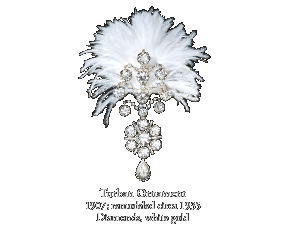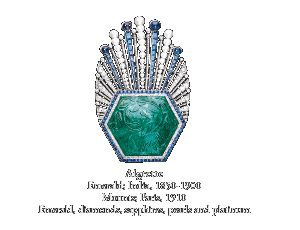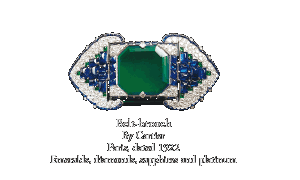
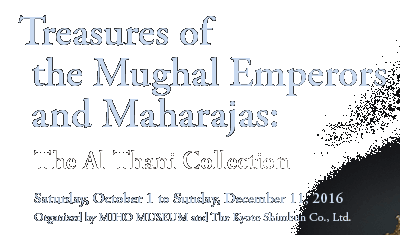
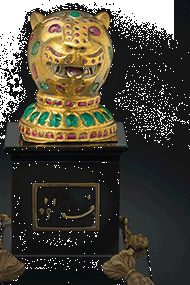
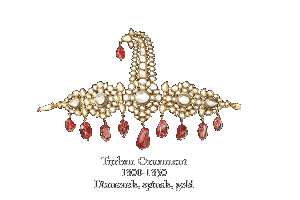


Ancient India produced diamonds, sapphires, rubies, and other
precious stones in abundance. Until the 18th century, India was the
only country producing diamonds. The Mughal emperors, who ruled
India from the 16th century, surrounded themselves with magnificent
furnishings bejeweled with variegated gems—set in gold, jade, and
crystal—and wore luxurious turban ornaments and accessories
decorated with many large precious stones.
Later, as European culture greatly influenced India, the maharajas commissioned major European jewelers, beginning with Cartier, to design extravagant gems, successively creating artistic jewelry that incorporated Indian and European culture.
Treasures of the Mughal Emperors and Maharajas showcases the world’s largest cut blue diamond, the Idol’s Eye, and other select Indian jewels from the collection of the Qatari royalty His Highness Sheikh Hamad bin Abdullah Al Thani. This exhibition also explores the history and design of gems from the 16th to 21st century as well as the changes in taste over time. In addition to masterpieces exhibited the Metropolitan Museum of Art in New York (10/28/14––1/25/15) and the Victoria and Albert Museum in London (11/21/15––4/10/16), the pinnacle of Indian treasures will be shown in Japan for the first time.
Later, as European culture greatly influenced India, the maharajas commissioned major European jewelers, beginning with Cartier, to design extravagant gems, successively creating artistic jewelry that incorporated Indian and European culture.
Treasures of the Mughal Emperors and Maharajas showcases the world’s largest cut blue diamond, the Idol’s Eye, and other select Indian jewels from the collection of the Qatari royalty His Highness Sheikh Hamad bin Abdullah Al Thani. This exhibition also explores the history and design of gems from the 16th to 21st century as well as the changes in taste over time. In addition to masterpieces exhibited the Metropolitan Museum of Art in New York (10/28/14––1/25/15) and the Victoria and Albert Museum in London (11/21/15––4/10/16), the pinnacle of Indian treasures will be shown in Japan for the first time.
